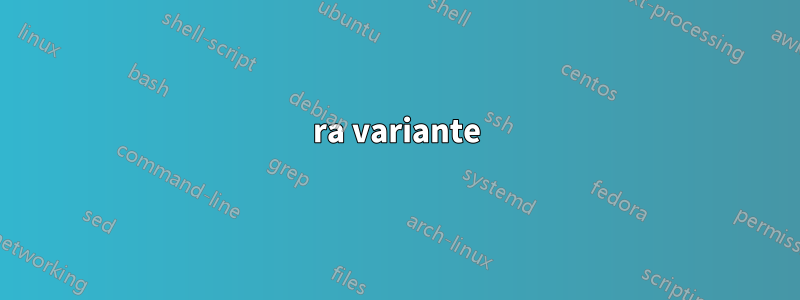
¿Existe alguna sintaxis como ifcommandla del keycommandpaquete en pgfkeys? quiero hacer algo como lo siguiente
\pgfkeys{
/Table/.is family,
/Table,
caption/.ecode = ???
}
\newenvironment{Table}[1][]{
\pgfkeys{/Table, #1}
\begin{table}
\TableCaption % expand to \caption{/Table/caption} if /Table/caption is set
% expand to nothing otherwise
}{
\end{table}
}
Respuesta1
Aquí, lo uso internamente /Table/@captionpara definir cómo insertar el título. Inicialmente su código está vacío. El /Table/captionestilo lo redefine a \caption{#1}.
\documentclass{article}
\usepackage{pgfkeys}
\pgfkeys{/Table/.is family,/Table}
\def\Tablekeys#1{\pgfkeys{/Table,#1}}
\Tablekeys{
@caption/.code={},
caption/.style={@caption/.code={\caption{#1}}},
}
\newenvironment{Table}[1][]{
\Tablekeys{#1}
\begin{table}[h]
\Tablekeys{@caption}
\centering
}{%
\end{table}
}
\begin{document}
\begin{Table}
\fbox{Content of table 1}
\end{Table}
\begin{Table}[caption=Table 2]
\fbox{Content of table 2}
\end{Table}
\end{document}
1ra variante
Usando el .trycontrolador, puedes (intentar) usarlo /Table/@captionsin inicialización:
\pgfkeys{/Table/.is family,/Table}
\def\Tablekeys#1{\pgfkeys{/Table,#1}}
\Tablekeys{
caption/.style={@caption/.code={\caption{#1}}}
}
\newenvironment{Table}[1][]{
\Tablekeys{#1}
\begin{table}[h]
\Tablekeys{@caption/.try}
\centering
}{%
\end{table}
}
2da variante
Puede almacenar el título en \TableCaption(a través del .store incontrolador) y utilizar \ifdefempty(desde etoolboxel paquete):
\usepackage{etoolbox}
\pgfkeys{/Table/.is family,/Table}
\def\Tablekeys#1{\pgfkeys{/Table,#1}}
\Tablekeys{
caption/.store in=\TableCaption,
% default caption is empty
caption=,
}
\newenvironment{Table}[1][]{
\Tablekeys{#1}
\begin{table}[h]
\ifdefempty{\TableCaption}{}{\caption{\TableCaption}}
\centering
}{%
\end{table}
}
Respuesta2
Probablemente esto también se pueda hacer con pgfkeys. Aquí hay una implementación completa con expl3claves.
\documentclass{article}
\usepackage{xparse}
\ExplSyntaxOn
\keys_define:nn { constructor/table }
{
caption .tl_set:N = \l_constructor_table_caption_tl,
short .tl_set:N = \l_constructor_table_shortcaption_tl,
label .tl_set:N = \l_constructor_table_label_tl,
alignment .tl_set:N = \l_constructor_table_alignment_tl,
alignment .initial:n = \centering,
specifier .tl_set:N = \l_constructor_table_specifier_tl,
specifier .initial:n = htp,
}
\NewDocumentEnvironment{Table}{O{}}
{
\keys_set:nn { constructor/table } { #1 }
\use:x { \exp_not:N \begin{table}[\l_constructor_table_specifier_tl] }
\tl_if_empty:NF \l_constructor_table_caption_tl
{
\tl_if_empty:NTF \l_constructor_table_shortcaption_tl
{
\caption
{
\l_constructor_table_caption_tl
}
}
{
\caption
[
\l_constructor_table_shortcaption_tl
]
{
\l_constructor_table_caption_tl
}
}
}
\tl_if_empty:NF \l_constructor_table_label_tl
{
\label{\l_constructor_table_label_tl}
}
\l_constructor_table_alignment_tl
}
{\end{table}}
\ExplSyntaxOff
\begin{document}
\listoftables
\begin{Table}[
specifier=tp,
]
\fbox{Content of noncaptioned table}
\end{Table}
\begin{Table}[
caption=caption text,
short=short,
label=foo,
alignment=\raggedright,
]
\fbox{A table with a caption}
\end{Table}
With a reference to table~\ref{foo}.
\end{document}
Dado que la tabla sin título tiene tp, aparece en la parte superior. En la lista de tablas, el título es el corto.
Sin embargo, no veo grandes ventajas sobre
\begin{table}[tp]
\fbox{Content of noncaptioned table}
\end{table}
\begin{table}
\caption[short]{caption text}\label{foo}
\raggedright
\fbox{A table with a caption}
\end{table}



